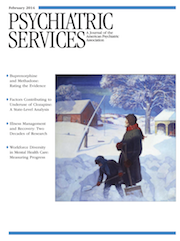Use of Mental Health Services by Children and Adolescents Six Months After the World Trade Center Attack
Abstract
Objective
The authors describe use of mental health services among children and adolescents after the September 11, 2001, attack on the World Trade Center.
Methods
Six months after the attack, sixth- through 12th-graders (N=6,986) who were representative of the student population were asked about their use of mental health services to talk about the attack as well as their exposure to the attack, symptoms of posttraumatic stress and major depressive disorders, and any conversations about the attack with a parent, teacher, or religious leader.
Results
Eighteen percent had used mental health services. Using in-school services was associated with conversation with a teacher about the attack. Using services outside school was associated with direct exposure to the attack, previous trauma exposure, probable psychiatric diagnosis, and conversation with a teacher or religious leader about the attack.
Conclusions
Teachers and religious leaders can function as gatekeepers to identify children in need following a disaster.



